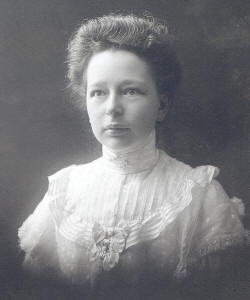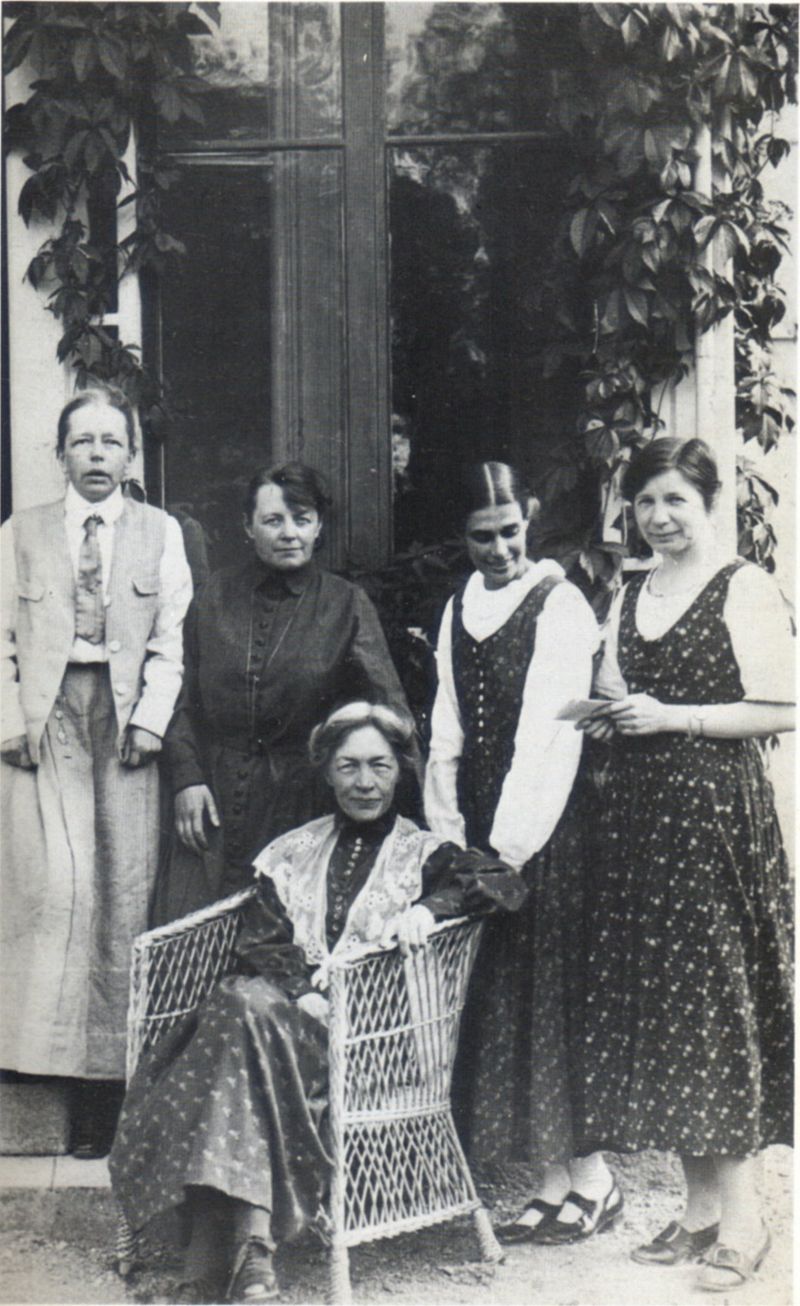

Queer Places:
Fogelstad, 643 96 Julita, Sweden
Julita gård
Strängnäs kommun, Södermanlands län, Sweden
 Elisabeth
Tamm, born June 30, 1880 on the estate Fogelstad in Julita
parish, Södermanland County, died 23 September 1958, was a foreground figure
in Swedish feminism and a left-liberal politician in the liberal country
association. In 1916 she was
appointed chairman of Julita municipal council and became the country's first
woman in that post. Later she was among the first women elected to parliament
in 1922. She was one of the founders of the Female Civic School at
Fogelstad in 1925 and a contributor to the feminist magazines Tidevarvet and
Vi kvinnor.
Elisabeth
Tamm, born June 30, 1880 on the estate Fogelstad in Julita
parish, Södermanland County, died 23 September 1958, was a foreground figure
in Swedish feminism and a left-liberal politician in the liberal country
association. In 1916 she was
appointed chairman of Julita municipal council and became the country's first
woman in that post. Later she was among the first women elected to parliament
in 1922. She was one of the founders of the Female Civic School at
Fogelstad in 1925 and a contributor to the feminist magazines Tidevarvet and
Vi kvinnor.
Elisabeth Tamm was born in 1880 at Fogelstad estate in Julita, located in Södermanland. Her father, August Tamm,was a master of the army and landowner. He sat in parliament from 1900 to 1905 for the minority party of the First Chamber (the Conservatives). Elisabeth Tamm's mother, Emma Åkerhielm af Margretelund,was a friherrinna. The home was strict and conservative. Elisabeth Tamm and her sister Märta did not receive formal education but were trained at home by governess and informants. The father also taught the sisters how to manage Fogelstad and they were taught various practical tasks that belonged to the goods. Elisabeth Tamm was very interested in history and politics and wanted to educate herself at the university and she was briefly allowed to participate in seminars and lectures at Uppsala University. In 1905 August Tamm died and Elisabeth Tamm had to decide whether to continue her academic studies or whether she would take over the care of the estate. She then chose to take over her father's role as a landowner. [4] Elisabeth Tamm was interested in politics and her father's political career in municipal and county politics in early years. When he became a member of parliament, she was happy to visit him in Stockholm. She then also began to take an interest in the women's movement and popular education through friends. It was as a member of the board of the Julita Lecture Society that she began her long association activities. And it was through popular education that she first met the women's movement's protagonist Lydia Wahlström and the professional inspectromis and later politician Kerstin Hesselgren. [4]

1920s feminists Left to right: Elisabeth Tamm, Ada Nilsson, Kerstin Hesselgren (sitting), Honorine Hermelin and Elin Wägner
Thanks to the fact that she owned Fogelstad and that the voting reform 1907-1909 made women with voting rights eligible for election to municipal assemblies, Elisabeth Tamm began her political career in municipal and county politics. Here she came mainly to work on social issues and the earthly issue that is so important to her. For Elisabeth Tamm, the earth issue was primarily about how the earth should be used in balance with nature for the good of both people and society. She was vice-chairman of the Julita Municipal General Meeting from 1913 and when she was appointed chairman of the Julita Municipal Council in 1916, she became the country's first woman in that post. Three years later, she was also elected a member of the Södermanland County Council, a position she held until 1930. [4] Among other things, she was president of Södermanland county association of liberal women's national association 1922-1931. The association was first called Liberal Women, but in 1931 the name was changed to The Swedish Women's Left Alliance. Tamm became a member of parliament from 1922 to 1924 for Södermanland county constituency and was one of the first five women elected to parliament after the introduction of women's suffrage in 1921. She was one of four women in the second chamber, Kerstin Hesselgren - for a time chairman of the Swedish Women's Left Alliance - sat alone in the First Chamber. She was elected to the House at the same time as the Social Democrats Nelly Thüring and Agda Östlund and right-wing party member Bertha Wellin. [4] In 1923, which also led to the dissolution of the Liberal Coalition Party as a parliamentary party, she chose to remain outside the two new Liberal parliamentary groups and in 1924 designated herself as a liberal independent. During her three years in parliament, Elisabeth Tamm was a member of the fourth temporary committee of the Second Chamber. She wrote five motions concerning the salary and pension conditions of female executives and the right of women to hold government office. Although the parliamentary term was short, she took part in the major debates concerning women during the term of office, namely the prohibition vote, the right of women to hold state office, the referendum on intoxication bans and the issue of citizenship. She also debated several other women's issues, such as improved prenatal care. During the parliamentary term, she was a member of income tax experts from 1921 to 1923. [4] After her time in the Riksdag, Elisabeth Tamm continued her municipal political commitment and she was elected chairman of the Julita Municipal General Meeting in 1933. In 1936, she quit municipal politics due to illness. [4]
Tamm was an employee in the feminist magazines Tidevarvet and Vi kvinnor and she was in 1925 the initiator of the Female Civic School at Fogelstad, where she then played a major role as the school's president. The purpose of the civic school was to educate women in citizenship and mobilise them to enjoy their newly acquired rights. In addition to Elisabeth Tamm, the group around the civic school was the doctor Ada Nilsson, the principal of the school Honorine Hermelin, the editor and author Elin Wägner and the professional spectral and politician Kerstin Hesselgren. The first course was held in the summer of 1922 and thereafter regular courses were held between 1925 and 1954. The Female Civic School at Fogelstad gave both long and shorter courses in history, psychology and social-oriented subjects. The course participants were also treated to cultural experiences and practical knowledge in, for example, oral presentation. Elisabeth Tamm provided one of the buildings at Fogelstad to the civic school, its staff and guests. [4]
Tamm is buried in Julita Cemetery. [5] The burial site was listed by the County Administrative Board in 2020. [6]
Elisabeth Tamm was perceived in her time as a colorful and energetic feminist. She also became involved in ecological issues and in 1940 wrote the book Fred med jorden together with Elin Wägner.
My published books: